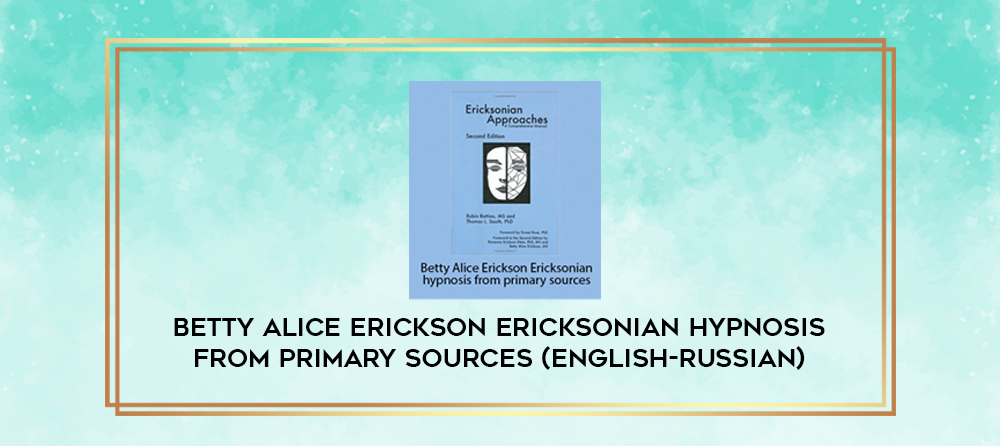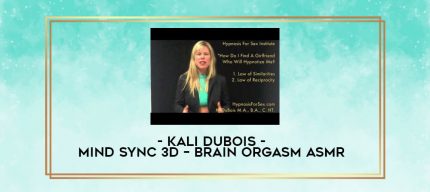Course Description
Betty Alice Erickson Ericksonian hypnosis from primary sources (English-Russian)
DVD
Hypnotism / NLP
6DVD
17.3 GB

Betty Alice Erickson Ericksonian hypnosis from primary sources
Archive : Betty Alice Erickson Ericksonian hypnosis from primary sources
Betty Alice Erickson
Ericksonian hypnosis from primary sources
Betty Alice Erickson, MS, LPC, LMFT, a hypnosis demonstration subject for
her father’s patients and students for over 30 years, has been Keynote Speaker
and faculty for national and international Conferences. Co-author of Hope &
Resiliency she’s written numerous book chapters and articles. Her latest book
(with Bradford Keeney), Milton Erickson, American Healer, has been
translated into three languages
The seminar program
A brief biography and history of Milton Erickson .
A brief overview of the basics of hypnosis. What is it? Why does it work?
The similarities and differences between formal hypnosis and conversational hypnosis.
Hypnotic communication. When and how to use it. Demonstration. Exercises.
The self-hypnosis.
How can you learn and practice.
Demonstration of self-hypnosis. Practice and exercise.
Naturalistic trance.
Modeling and invitation. Expectations. Storytelling:
Demonstration. Practice.
Formal trance.
From Standard induction to -Individual.
Techniques of formal trance.
Standard induction.
The responsibility of the hypnotherapist.
The demonstration of the standard induction: the levitation of the arms, fixation of the eyelids, etc.
Exercises. Practice.
Cooperation.
-Create together! the hypnotherapist leads
-Never say -no
Read customer’s feedback.
Demonstration, practice and exercises.
Deepening of the trance.
The steps – feedback what is really going on.
The truisms in the guidance.
Directional suggestion. The reality is what will happen. -Every breath is sure to follow the exhale.
Compliance – -mirroring.
When the trance is deep enough?
Demonstration, practice and exercises.
Ideomotor signals.
Finger movement, nodding, breathing . The conversation in the TRANS. Typical difficulties
The answers to the questions.
Demonstration, practice and exercises.
Psychological techniques.
Age regression.
State-dependent learning, productive splitting of the -self.
How to help people -feel better – self-acceptance and self-esteem.
Direct and indirect suggestion.
Demonstration, practice and exercises.
The Mind/Body.
Stress, pain management. Anxiety and panic.
Demonstration, practice and exercises.
Healing. Demonstration of healing























Reviews
There are no reviews yet.